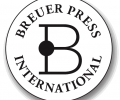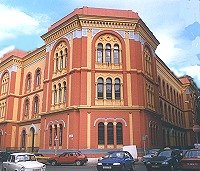Israel’s War of Independence: Remembering the Losses
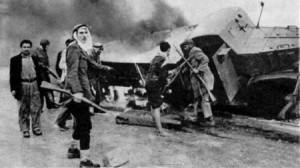 On May 14, 1948, David Ben Gurion declared the establishment of Israel, a Jewish state in the biblical homeland of the Jewish people, Eretz Israel. Immediately following Israel’s birth as a nation, five neighboring Arab nations, Egypt, Syria, Lebanon, Transjordan, and Iraq declared war on the fledgling state and thus began Israel’s War of Independence. Although Israel emerged victorious, the costs were high. More Israelis died during Israel’s War of Independence than during any of the other wars that Israel has fought. Indeed, 4,000 Israeli soldiers and 2,000 Israeli civilians lost their lives fighting for Israeli independence. That number amounted to one percent of the Israeli population at the time. Considering the size of the Israeli population back then, this number amounted to triple the number of American causalities during World War II. As Israelis and Jews around the world commemorate Yom ha-Zikhron, it is important to remember the tragedies that occurred during that war which led to the establishment of the world’s only Jewish state, as well as the stories of bravery and heroism.
On May 14, 1948, David Ben Gurion declared the establishment of Israel, a Jewish state in the biblical homeland of the Jewish people, Eretz Israel. Immediately following Israel’s birth as a nation, five neighboring Arab nations, Egypt, Syria, Lebanon, Transjordan, and Iraq declared war on the fledgling state and thus began Israel’s War of Independence. Although Israel emerged victorious, the costs were high. More Israelis died during Israel’s War of Independence than during any of the other wars that Israel has fought. Indeed, 4,000 Israeli soldiers and 2,000 Israeli civilians lost their lives fighting for Israeli independence. That number amounted to one percent of the Israeli population at the time. Considering the size of the Israeli population back then, this number amounted to triple the number of American causalities during World War II. As Israelis and Jews around the world commemorate Yom ha-Zikhron, it is important to remember the tragedies that occurred during that war which led to the establishment of the world’s only Jewish state, as well as the stories of bravery and heroism.
One of the greatest massacres that Arab forces perpetrated against Jews during Israel’s War of Independence was the massacre of a Hadassah convoy of doctors and nurses in Jerusalem, on April 13, 1948. 79 innocent people, many of whom worked to save other peoples lives as a profession, were slaughtered. Tamar Fuchs, who was 12 years old at the time, remembers the massacre vividly. She asserted, “At about 10 a.m., a neighbor burst in shouting, ‘They’re attacking the convoy to Mt. Scopus.’ From the roof, we saw black smoke and passing British cars which did not offer help. The sharp smells of burnt flesh drifted with the eastern winds in our direction. Until 2 p.m. we saw smoke and heard explosions. My friend’s sister, Nurse Ziva Barazani, was in the convoy. Her remains were not found.”
Another one of the most horrific massacres that Arab forces perpetrated during Israel’s War of Independence was the Gush Etzion Massacre on May 13, 1948. During this massacre, the 133 inhabitants of Kibbutz Kfar Etzion were slaughtered, even though after several days of siege they emerged with white flags in their hands. This did not prevent the Arab forces from opening fire at the group and stabbing the ones who survived that attack with knives. The Arab forces did not even spare the women of the kibbutz. After the massacre, the kibbutz was looted and burned.
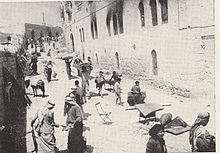 Yet, out of all of the tragedies that occurred during the 1948 war, the largest one of all was the loss of the Jewish Quarter of the Old City of Jerusalem following a siege during which the Jews of the Old City suffered immensely. In his bookGenesis 1948, Dan Kurtzman described what Judith Jaharan, one of the female defenders of the Jewish Quarter during the 1948 war, witnessed when she took a break from the fighting to go visit her parents inside a synagogue where they took shelter: “She found herself in a cage of terror in which women, children, and old men, all white-faced and trembling, clung to each other on dirt-encrusted blankets and mattresses spread over the floor, weeping, praying, shouting hysterically, or—-most horrifying of all—just gazing vacantly into a world far distant from the insane reality of explosions and machine-gun fire that shook the building like an earthquake.”
Yet, out of all of the tragedies that occurred during the 1948 war, the largest one of all was the loss of the Jewish Quarter of the Old City of Jerusalem following a siege during which the Jews of the Old City suffered immensely. In his bookGenesis 1948, Dan Kurtzman described what Judith Jaharan, one of the female defenders of the Jewish Quarter during the 1948 war, witnessed when she took a break from the fighting to go visit her parents inside a synagogue where they took shelter: “She found herself in a cage of terror in which women, children, and old men, all white-faced and trembling, clung to each other on dirt-encrusted blankets and mattresses spread over the floor, weeping, praying, shouting hysterically, or—-most horrifying of all—just gazing vacantly into a world far distant from the insane reality of explosions and machine-gun fire that shook the building like an earthquake.”
During this war, twenty-two of the twenty-seven historic Jewish synagogues within the Old City of Jerusalem were destroyed. 68 residents of the Jewish Quarter in the Old City were killed during six months of war. After the Jewish forces surrendered, Jewish homes within the Old City were looted and burned, while Jewish dead bodies were also put to the flame. The Arab Legion took 340 Jewish prisoners, while the rest of the Jewish population, consisting of 1,400 souls, was forcefully expelled from their homes, never to see them again until after the Six Day War, when Israel regained control of the Old City. Thus, while Israel did succeed to gain her independence after the 1948 war, it came at a tremendous humanitarian cost.
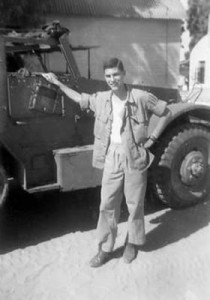 On this day, Yom Ha-Zikhron, we should also remember the brave soldiers who fought so that Israel could be a state. One of them, Nissim Gini, was just 10 years old during the time of the 1948 war. Despite his young age, due to the desperate situation within the Old City of Jerusalem, he worked as a messenger, delivering messages between the various Israeli forces. He was the youngest Israeli soldier to get killed during any of Israel’s wars. Another brave soldier who fought was named Ralph Lowenstein. He was an American Jewish college student who decided to temporarily postpone his studies so that he could help Israel become a state, despite the fact that he lacked military experience and didn’t know good Hebrew. Disguised as a Holocaust survivor, he entered Israel with the purpose of fighting, not knowing if the US would take away his citizenship or not for taking such a bold action. He was one of 1,000 Canadian and American Jews who volunteered to serve in the Israeli armed forces during the 1948 war. Forty of these Americans and Canadians would die fighting for Israel. On this important day, let us remember their courage and dedication.
On this day, Yom Ha-Zikhron, we should also remember the brave soldiers who fought so that Israel could be a state. One of them, Nissim Gini, was just 10 years old during the time of the 1948 war. Despite his young age, due to the desperate situation within the Old City of Jerusalem, he worked as a messenger, delivering messages between the various Israeli forces. He was the youngest Israeli soldier to get killed during any of Israel’s wars. Another brave soldier who fought was named Ralph Lowenstein. He was an American Jewish college student who decided to temporarily postpone his studies so that he could help Israel become a state, despite the fact that he lacked military experience and didn’t know good Hebrew. Disguised as a Holocaust survivor, he entered Israel with the purpose of fighting, not knowing if the US would take away his citizenship or not for taking such a bold action. He was one of 1,000 Canadian and American Jews who volunteered to serve in the Israeli armed forces during the 1948 war. Forty of these Americans and Canadians would die fighting for Israel. On this important day, let us remember their courage and dedication.
By Rachel Avraham

